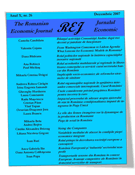Abstract:
Globalization of the world economy is a key driver of air traffic growth. Cross-investment between European countries, as well as to and from the USA, Far East and the rest of the world is increasingly a feature of modern business, with mobility of labor as a growing factor. The most important contribution of airports is the connectivity they provide, which allows the European economy and society to flourish. Air transport provides accessibility, which is essential in a modern economy and society. The air transport sector is evolving rapidly to meet the changing needs of society as a whole. It is predicted that, despite recent global events, overall air traffic growth rates are likely to return to previous levels (5-6% per annum) in the medium term, driven in part by the growth in low cost services. Transport is seen as an important factor in the economic and social integration of Europe, and an important indicator of the quality of life. Its significance will continue to grow with the enlargement of the European Union. The EU has recognized the importance of mobility to the social and economic development of nation states and also to the integration and realization of the Union. In addition, in remote regions, air transport fulfils a crucial social function, often connecting communities to essential services, such as hospitals and further education. European airports are now widely recognized as having a considerable economic and social impact on their surrounding regions. These impacts go far beyond the direct effect of an airport operation on its neighbors, to the wider benefits that air service accessibility brings to regional business interests and to consumers. Airports provide the essential infrastructure to support regional social and economic growth; moreover, they are commercial entities in their own right, capable of generating returns on investment to the benefit of their shareholders, other stakeholders and to society as a whole. It is also possible to identify ‘air intensive’ sectors of business. It is the financial and business services sectors which often make the greatest use of air transport and for whom accessibility to air services will have the strongest influence on location decisions. Airports with available land are developing business parks to capitalize on the attractiveness of air service connectivity to businesses. Often these business parks are used by firms with some connection to the airport or aerospace industries. Otherwise they are chosen as locations for companies making intensive use of air transport. Examples include Cork, Hamburg, Nice and the ‘Aviapolis’ development at Helsinki Airport. The use of air freight as a means of transport is increasing, particularly for high value, low weight goods, or those requiring urgent transport. OECD has estimated that up to a third in value of world trade in merchandise travels by air. That’s why policy makers must better acknowledge the social benefits provided by airports in terms of the freedom to fly.
